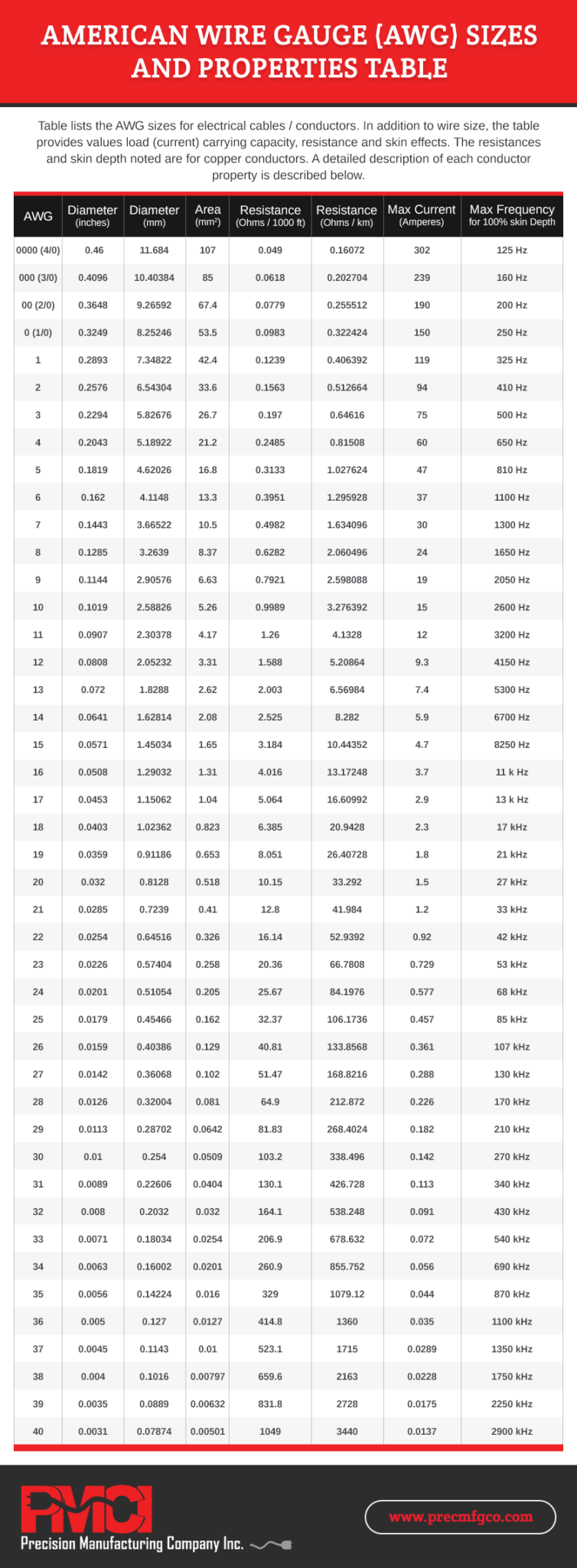

The maximum frequency show is for 100% skin depth (ie. The skin effect causes the effective resistance of the conductor to increase with the frequency of the current. That is, the electric current tends to flow at the "skin" of the conductor. Skin Effect and Skin Depth: Skin effect is the tendency of an alternating electric current (AC) to distribute itself within a conductor so that the current density near the surface of the conductor is greater than that at its core.

12 AWG - maximum of 25 Amps in free air, maximum of 20 Amps as part of a 3 conductor cable.

14 AWG - maximum of 20 Amps in free air, maximum of 15 Amps as part of a 3 conductor cable.You can also call it the Brown & Sharpe wire gauge or just the wire gauge. The National Electrical Code (NEC) notes the following ampacity for copper wire at 30 Celsius: The smallest standard size in AWG is 40 AWG, and the largest is 0000. Aluminum wire has a conductivity of approximately 61% of copper.Ĭurrent (ampacity): The current ratings shown in the table have been determined using the rule of 1 amp per 700 circular mils, which is a very conservative rating. For a given current, use the noted resistance and apply Ohms Law to calculate the voltage drop across the conductor. Resistance: The resistance noted above is for copper conductors. 8 AWG.) This quadruples the cross-sectional area and the ampacity.ĭiameter: A mil is a unit of length equal to 0.001 inch (a "milli-inch" or a "thousandth of one inch") ie. The general rule of thumb is when the diameter of a wire is doubled, the AWG will decrease by 6. AWG: American Wire Gauge (AWG) is a standardized wire gauge system used predominantly in the United States to note the diameter of electrically conducting wire.


 0 kommentar(er)
0 kommentar(er)
